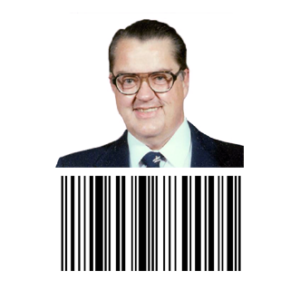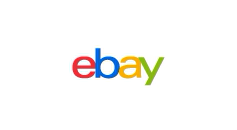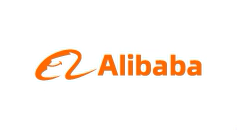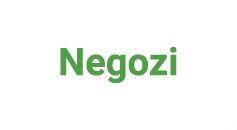It has been called by many names throughout its history: UPC, EAN, and now GTIN. But it has always been commonly known as the Barcode!
The history of the Barcode
Printed labels on almost every type of packaging, captivating the imagination of young and old alike. Fascinated by the effect they create at supermarket checkouts.
Perhaps it doesn’t matter who was the first to invent the Barcode, the GTIN specifically, and how codes help computers and humans avoid mistakes. We are more concerned with how to apply them. Unfortunately, we discover that some people make them, sell them, or claim to be their authority.
At that point, we have to take a step back and try to understand how they are made and why, sometimes, it can be so challenging to use them.
For those who struggle with applying codes to their products, we would tell them that there is no need to worry. The inventors did everything they could to make things easier!
Those black and white bars may seem mysterious and abstract, but all it takes is a simple “beep” to start dreaming of great sales!
It all began in the United States, among the largest countries in the world in terms of size and population, whose constitution starts with three words, “We the people.” Written in bold, in addition to representing a dimension of population, it also implies the dimension of consumption!
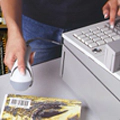 We are in 1787, and as early as 1859, the first “supermarkets” and “self-service” were already making their appearance. Large-scale production, high market demand, and the need to automate cashier operations in supermarkets. Large stores where customers could do their shopping by themselves, with the cashier capable of tallying the bill in a few seconds. IBM, the company operating in the data processing field at the time, found the solution.
We are in 1787, and as early as 1859, the first “supermarkets” and “self-service” were already making their appearance. Large-scale production, high market demand, and the need to automate cashier operations in supermarkets. Large stores where customers could do their shopping by themselves, with the cashier capable of tallying the bill in a few seconds. IBM, the company operating in the data processing field at the time, found the solution.
It is an intriguing and very interesting story that began in the 1960s when the National Association of Food Chains, an association of supermarkets and grocery stores in the United States, sought a solution to speed up checkout procedures. In reality, some studies began as early as 1949 by Norman Joseph Woodland and Bernard Silver. 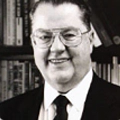 However, it was only in March 1973 that Engineer George Joseph Laurer, who worked at IBM, the American company that produced “data processing” systems before the existence of the first true computers, put his own career at stake and, with the help of his then fifteen-year-old son, essentially invented what is still in use today: the U.P.C. | UPC | Universal Product Code.
However, it was only in March 1973 that Engineer George Joseph Laurer, who worked at IBM, the American company that produced “data processing” systems before the existence of the first true computers, put his own career at stake and, with the help of his then fifteen-year-old son, essentially invented what is still in use today: the U.P.C. | UPC | Universal Product Code.
The most curious thing is that both IBM and the inventor didn’t even attempt to patent the new system, precisely to not hinder its implementation or discourage its use. An admirable idea that aligns with the current world of sharing, but unfortunately didn’t prevent the introduction of financial rules that effectively hinder more straightforward access to sales systems that use this standard.
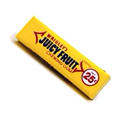 And so, in 1974, the first product with a barcode was sold: a pack of “Wrigley’s” fruit-flavored chewing gum in a “Marsh” store in Troy, Ohio (USA), and many companies followed suit. There were so many requests that it became necessary to regulate and coordinate this new sales system, with the maintenance of registers and regulations, initially in the United States and gradually throughout the rest of the world.
And so, in 1974, the first product with a barcode was sold: a pack of “Wrigley’s” fruit-flavored chewing gum in a “Marsh” store in Troy, Ohio (USA), and many companies followed suit. There were so many requests that it became necessary to regulate and coordinate this new sales system, with the maintenance of registers and regulations, initially in the United States and gradually throughout the rest of the world.  It took about 10 years for the establishment of the Uniform Code Council, Inc. or “
It took about 10 years for the establishment of the Uniform Code Council, Inc. or “
UCC,” a non-profit American company based in Delaware (USA) known today as GS1 (gs1.org). Many companies were authorized by UCC|GS1 to use Barcodes and to utilize the invention to great benefit for commerce in general. But this idyll ended when UCC|GS1 began to demand that registered companies pay membership fees and annual renewal fees. 
UCC|GS1, in violation of usage rules, triggered the reaction of all those companies that were already using the codes for free: a “class-action” worth $3,895,000, millions of dollars!The judgment of December 15, 2003 (Supreme Court of Spokane County, Washington (USA) – Civil Action No. 03-203796-1) not only determined the reimbursement of undue amounts but also decided that prefixes issued before August 28, 2002 would remain under the same original usage conditions, without expiration dates, membership fees, and renewal fees. 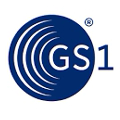
In the meantime, the use of Barcodes spread worldwide, and in 2005, the UCC became GS1, operating based in Brussels, Ixelles (Belgium), and other representative offices worldwide, always through non-profit companies.
In 2005, the Uniform Code Council, Inc., or UCC, became GS1 US.
Under its sponsorship, GS1 US oversees three wholly-owned subsidiaries: EPCglobal US, RosettaNet, and UCCnet. GS1 US manages the United Nations Standard Products and Services Code (UNSPSC) for the United Nations Development Programme. EPCglobal, Inc. is a joint venture of GS1 US and GS1 (formerly EAN International). GS1 US-based solutions include business processes, XML standard, EDI transaction system, and the EAN Barcode Identification Standard. The UCC system is currently used by affiliated companies worldwide. GS1 US is headquartered in Lawrenceville, NJ, USA.
1948
An idea from a Boy Scout
Norman Joseph Woodland devises a way, based on Morse code, to automatically capture product information at supermarket checkouts (Supermarket Ad Hoc Committee).
1972
IBM - George J. Laurer
The IBM assigns engineer George J. Laurer with the task of developing Barcodes to be used in supermarkets based on Joe Woodland’s idea.
1972
1973
1974
The first product with the Barcode
In June, inside an American supermarket, a pack of chewing gum becomes the first product with the UPC Barcode to be scanned.
1974
1975
European Article Numbering
Europe also adopts a similar and UPC-compatible system by adding a 13th digit for global identification.
1997
European Article Association
The European Article Association, later known as the European Article Numbering (EAN), is founded as a non-profit organization based in Brussels to coordinate the standard.
1997
1978
Indicod
Indicod (“Istituto Nazionale Per La Diffusione Della Codifica Dei Prodotti”) is established as an association responsible for promoting the adoption of the standard in Italy.
1983
From supermarket checkouts to logistics
The use of the standard expands, thanks to the various types of Barcodes, extending from supermarket checkouts to logistics.
1983
1993
EDI
EDI (Electronic Data Interchange) is born, a system created for the exchange of electronic information.
1995
The barcode in the Italian healthcare system
The standard reaches the Italian healthcare system through initial experiments.
1995
1996
Development of automatic identification
The SC 31, a committee of the International Organization for Standardization (ISO), establishes international cooperation on the development and use of automatic identification.
1999
1999
2001
Euritmo
Indicod launches the “Euritmo” platform to facilitate information exchange between companies through the Internet.
1999
Class Action
A legal battle erupts against UCC, now GS1, when it attempts to introduce costs for membership fees, royalties, and limits for prefix holders. This leads to a class-action lawsuit by UCC members against UCC itself.
1999
2003
The Verdict
The legal case concludes with a verdict, UCC Settlement Dec 2003 in the state of WA, USA: ‘Active UCC prefix holders prior to August 28, 2002 are exempt from membership fees and renewal fees, retaining their membership with UCC and free to self-produce up to 100,000 codes per prefix.’
2003
The New Standards
Further standards emerge: EPCglobal and DataMatrix, the first two-dimensional code. Radio Frequency Identification (RFID) is introduced, including Gen2, and the Global Data Synchronization Network (GDSN) is established, based on the Internet.
2003
2004
The Expansion of GS1
Indicod and Ecr Italia merge, and between 2004 and 2005, GS1 is launched worldwide.
2007
The World Customs Organization
The World Customs Organization (WCO) and GS1 sign a memorandum of understanding to optimize standards in customs.
2007
Present days
From the idea of a former boy scout to the global standard of GS1.

